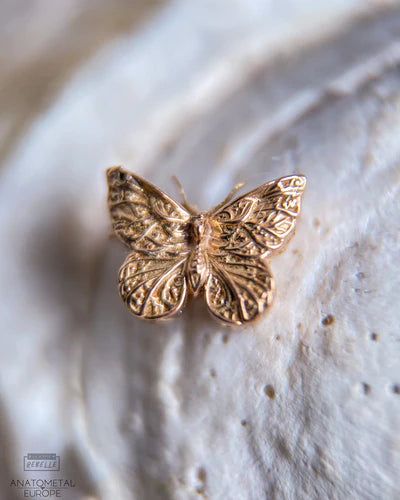
The difference in gold.
To measure the quality or fineness of gold, we use the term 'carat', which is based on the number of parts in 24 carats.
This means that 24 by 24 parts is pure gold, or 24 carats.
18 carat gold consists of 75% gold
14 karat gold consists of 58.3% gold
9 carat gold consists of 37.5% gold
Did you know that, in some countries, anything below 50% gold is not allowed to be sold as gold?
Gold stamps are also derived from the percentage of gold. They settle the percentage at 1000 instead of 100 and this becomes one of the stamps. For example, 18 karat is 75% gold, so this will be stamped 750.
There are other stamps that are often included, but these often have to do with origin, era, collections, the seal of the goldsmith or brand.
But now the question is, what do jewelers use for the remaining parts?
In general, gold is diluted with alloys. This formula is usually the following:
Gold
+
Zinc
+
Buyer
+
Silver, Nickel or Palladium
Often fashion brands or fast selling jewelry will be diluted with nickel to keep the price low, or with silver. Often these jewels are also solid sterling silver with a thin layer of 9 carat gold.
In the piercing industry, and I am mainly talking about the high end piercing industry (the difference in the industry is for another blog) we mainly use palladium or other anti-allergic metals, and the gold must be at least solid 14 carat gold in order to to keep the other particles to a minimum but that the gold is still firm or flexible enough to make nice gems out of it.
The higher the carat, the more gold, the smoother.
The lower the carat, the more other metals, the harder it gets.
In the high-end piercing industry we therefore only work with solid gold and we avoid gold-plated jewelry.
Why?
Because the layer of gold crumbles over time and this ends up in your piercing channel, you also never know for sure which metal is under the layer, so you often have to deal with 'mystery metals' that contain nickel or silver, for example. which is not suitable to wear in the body for a lot of reasons.
Organizations such as the APP or APP Benelux (association of professional piercers) have volunteers who have experience with chemical test results to study and actually go to test their jewelry per jeweler or supplier to see if nothing is used of alloy that is not safe. would be for the body.
Since La p'tite Rebelle is a member of the APP Benelux & APP, we only work with suppliers that have been tested and approved, so I can always guarantee that there is no nickel or silver in anything.

How do they make yellow, white and rose gold?
If all ingredients or alloys are in balance, the gold remains a nice warm yellow color.
If you add more copper, the gold will turn red or rosé.
If you add more palladium or nickel, the gold turns white.
If you add more silver, your gold will turn green.
With rhodium they can make black gold themselves.
Spoiler.
Occasionally you have jewelers or fashion brands who claim that their jewelry is 14 carat gold, but the yellow gold is very light in color, or very yellow. Then you now know that the ingredients are not in balance and that there is probably a little more nickel in it, for example. This is often done to push the price of the jewelry down. But then you have to pay for quality or safety for long-term wearing in the body.
Did you know that, in the high end piercing industry, gold stamps should not be placed on the jewelry because these can carry bacteria into your piercing canal, which in turn can cause irritation or inflammation.
So always pay attention when you buy jewelry that if it is stamped, it cannot come into contact with your skin.
